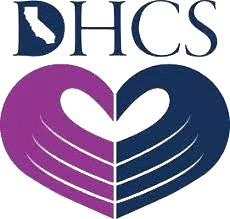Understanding the differences between crack cocaine and methamphetamine is crucial for anyone dealing with substance abuse or supporting someone who is. Crack, a form of cocaine that is typically smoked, delivers a rapid and intense high that lasts about 5 to 10 minutes. This quick, euphoric rush is followed by an equally rapid crash, leading to frequent use and a high potential for addiction. According to the National Institute on Drug Abuse, cocaine use, including crack, can lead to severe health issues like heart attacks, strokes, and respiratory failure.
Methamphetamine, on the other hand, is a synthetic stimulant that can be ingested, snorted, smoked, or injected. Meth use results in a longer-lasting high, often lasting 6 to 12 hours. The prolonged effects of meth make it particularly dangerous, as users may stay awake and active for extended periods, leading to severe physical and mental health issues. Methamphetamine abuse can result in extreme weight loss, dental problems, and severe psychological issues such as paranoia and hallucinations. Understanding these differences is vital for identifying and addressing the specific challenges associated with each drug.
What is Crack?
Crack cocaine, commonly known as crack, is a freebase form of cocaine that can be smoked. It emerged in the 1980s as a cheaper, more potent alternative to powder cocaine, making it more accessible and contributing to widespread abuse. Crack gets its name from the crackling sound it makes when heated, a distinctive trait that sets it apart from other forms of cocaine.
According to the National Institute on Drug Abuse, crack use can lead to serious health issues, including increased heart rate, high blood pressure, and respiratory problems. The intense and immediate high, which typically lasts only about 5 to 10 minutes, often leads users to consume the drug repeatedly in a short period, significantly raising the risk of addiction and overdose. Understanding the nature and effects of crack is crucial for those seeking to combat its abuse.
How is Crack Used?
Crack is typically smoked, which allows the drug to reach the brain quickly, resulting in an almost immediate and intense high. This method of use also makes it highly addictive, as users often seek to replicate the intense euphoria experienced during the first use.
Effects of Crack
The effects of crack are intense but short-lived, often lasting only about 5 to 10 minutes. Users may experience:
- Euphoria
- Increased energy
- Heightened alertness
- Decreased appetite
However, these effects are quickly followed by a “crash” characterized by feelings of depression, irritability, and extreme cravings. Long-term use can lead to severe health problems, including respiratory issues, cardiovascular damage, and mental health disorders.
What is Meth?
Methamphetamine, commonly known as meth, is a powerful and highly addictive stimulant that affects the central nervous system. Meth is available in several forms, including powder and crystalline (crystal meth), and can be ingested, snorted, smoked, or injected. Meth use can lead to severe health problems such as extreme weight loss, dental issues (“meth mouth”), skin sores, and increased risk of infectious diseases.
Recognizing the appearance of meth can aid individuals in identifying the drug and taking appropriate action. Meth can manifest in several forms, each with distinct characteristics:
- Powder Meth: A fine, crystalline powder that can be white or yellowish. This form is typically snorted or ingested.
- Crystal Meth: Clear or bluish crystals resembling ice or glass shards. This form is usually smoked or injected, providing a more intense and immediate high.
The prevalence of meth abuse is alarming, with nearly 1.6 million people aged 12 or older used meth in the past year. Understanding these forms can help in identifying meth and preventing its spread within communities.
How is Meth Used?
Methamphetamine, commonly known as meth, can be consumed in several ways, each affecting the user differently and posing various health risks.
Smoking
Smoking meth, often in the form of crystal meth, is one of the most common methods. This method produces an intense and immediate high because the drug reaches the brain quickly. However, smoking meth can lead to severe lung damage and respiratory problems.
Injecting
Injecting meth involves dissolving the drug in water and injecting it directly into the bloodstream. This method also results in a rapid and intense high, but it poses additional risks, such as vein damage, infections, and an increased risk of transmitting blood-borne diseases.
Snorting
Snorting meth involves inhaling the powdered form of the drug through the nose. While the high from snorting is not as immediate as smoking or injecting, it can still be very powerful. Snorting meth can cause severe damage to the nasal passages and sinuses over time.
Ingesting
Ingesting meth, typically by swallowing the drug in pill form or mixed with food or drink, results in a slower onset of effects compared to other methods. The high may take longer to develop but can last longer. Ingesting meth can cause significant gastrointestinal issues, including nausea and abdominal pain.
Effects of Meth
The effects of meth are longer-lasting compared to crack, typically lasting from 6 to 12 hours. Users may experience:
- Euphoria
- Increased energy and wakefulness
- Increased physical activity
- Decreased appetite
Despite these seemingly positive effects, meth use is associated with severe negative consequences. Long-term use can lead to extreme weight loss, dental problems (“meth mouth”), skin sores, and a variety of cognitive and emotional issues, including anxiety, paranoia, and hallucinations.
Comparing Crack and Meth
Chemical Composition
While both crack and meth are powerful stimulants, their chemical compositions and sources differ significantly. Crack is derived from cocaine, a naturally occurring substance extracted from coca plants. It is processed into a smokable form that produces a quick and intense high. Methamphetamine, or meth, is entirely synthetic and produced using various chemicals, including pseudoephedrine, which is commonly found in cold medications. This synthetic nature allows meth to be more potent and versatile in its forms and methods of consumption.
Duration and Intensity of Effects
The high from crack is intense but short-lived, typically lasting about 5 to 10 minutes. This brief euphoria often leads to frequent use as individuals seek to maintain the high, resulting in a high potential for addiction. In contrast, meth’s effects can last much longer, from 6 to 12 hours, leading to prolonged periods of wakefulness and increased physical activity. However, the extended high also results in more severe crashes, characterized by extreme fatigue, depression, and intense cravings. This prolonged effect makes meth use particularly dangerous, as users may stay awake and active for extended periods, leading to severe physical and mental health issues.
Addiction and Withdrawal
Both crack and meth are highly addictive, but the patterns of addiction can differ. Crack addiction often involves intense cravings and frequent use due to the short duration of its effects. The quick onset and rapid decline of the high can create a cycle of repeated use to stave off the inevitable crash. Meth addiction, while also involving strong cravings, often leads to extended binges due to the longer-lasting effects of the drug. Users may stay awake for days, continuously using the drug to maintain the high, which can result in severe health complications and erratic behavior.
Withdrawal from both substances can be challenging, with symptoms that include fatigue, depression, increased appetite, and intense drug cravings. These withdrawal symptoms can make it difficult for individuals to quit without professional help. At Tres Vistas Recovery, we offer comprehensive meth addiction treatment to help individuals safely navigate the withdrawal process and begin their journey to recovery. Our programs are designed to address the physical, psychological, and social aspects of addiction, providing a holistic approach to treatment and long-term recovery.
Understanding the differences between crack and meth is crucial for recognizing and addressing the specific challenges associated with each drug. Comprehensive treatment programs, like those offered at Tres Vistas Recovery, are essential for helping individuals overcome addiction and reclaim their lives. If you or someone you know is struggling with addiction, don’t hesitate to reach out to Tres Vistas Recovery. Our experienced team is here to provide the support and care needed to achieve lasting recovery.
Meth Addiction Treatment at Tres Vistas Recovery
At Tres Vistas Recovery, we understand the unique challenges that come with meth addiction. Our meth addiction treatment program is designed to address the physical, psychological, and social aspects of addiction, providing a holistic approach to recovery.
Intensive Outpatient Program (IOP)
Our Intensive Outpatient Program (IOP) offers flexible treatment options for individuals who need structured support while maintaining their daily responsibilities. IOP includes individual counseling, group therapy, and educational sessions to help clients develop coping strategies and prevent relapse.
Partial Hospitalization Program (PHP)
Our Partial Hospitalization Program (PHP) provides a higher level of care for those who need more intensive support. PHP offers comprehensive treatment, including medical monitoring, therapy, and life skills training, all within a supportive and structured environment.
Therapy and Counseling
Therapy and counseling are integral parts of our meth addiction treatment program. We offer a range of therapeutic approaches, including Cognitive Behavioral Therapy (CBT), Dialectical Behavior Therapy (DBT), and trauma-informed care, to help clients address the underlying causes of their addiction and develop healthier coping mechanisms.
It’s important to understand the differences between meth and prescription stimulants like Adderall. While both drugs have stimulant effects, Adderall is prescribed for legitimate medical purposes, such as treating ADHD and narcolepsy. Meth, on the other hand, is illegal and has no accepted medical use.
Adderall and meth have similar effects on the brain, increasing levels of dopamine and norepinephrine, which can lead to increased focus and energy. However, meth’s effects are much more potent and damaging due to its higher potency and the methods of use commonly associated with it.
Addiction Treatment at Tres Vistas Recovery
Understanding the differences between crack and meth is crucial for anyone affected by substance abuse. Both drugs are highly addictive and can lead to severe health consequences. At Tres Vistas Recovery, we offer comprehensive treatment programs, including IOP and PHP, to help individuals overcome addiction and reclaim their lives.
If you or someone you know is struggling with addiction, don’t hesitate to reach out to Tres Vistas Recovery. Our experienced team is here to provide the support and care needed to achieve lasting recovery. Contact us today to learn more about our meth addiction treatment and other services. Together, we can build a brighter, healthier future.

Tracey Kane is an Associate Marriage and Family Therapist and Assistant Clinical Director at Tres Vistas Recovery. With over 11 years of experience in the field of addiction treatment, Tracey has dedicated her career to helping individuals struggling with substance abuse and mental health issues.











